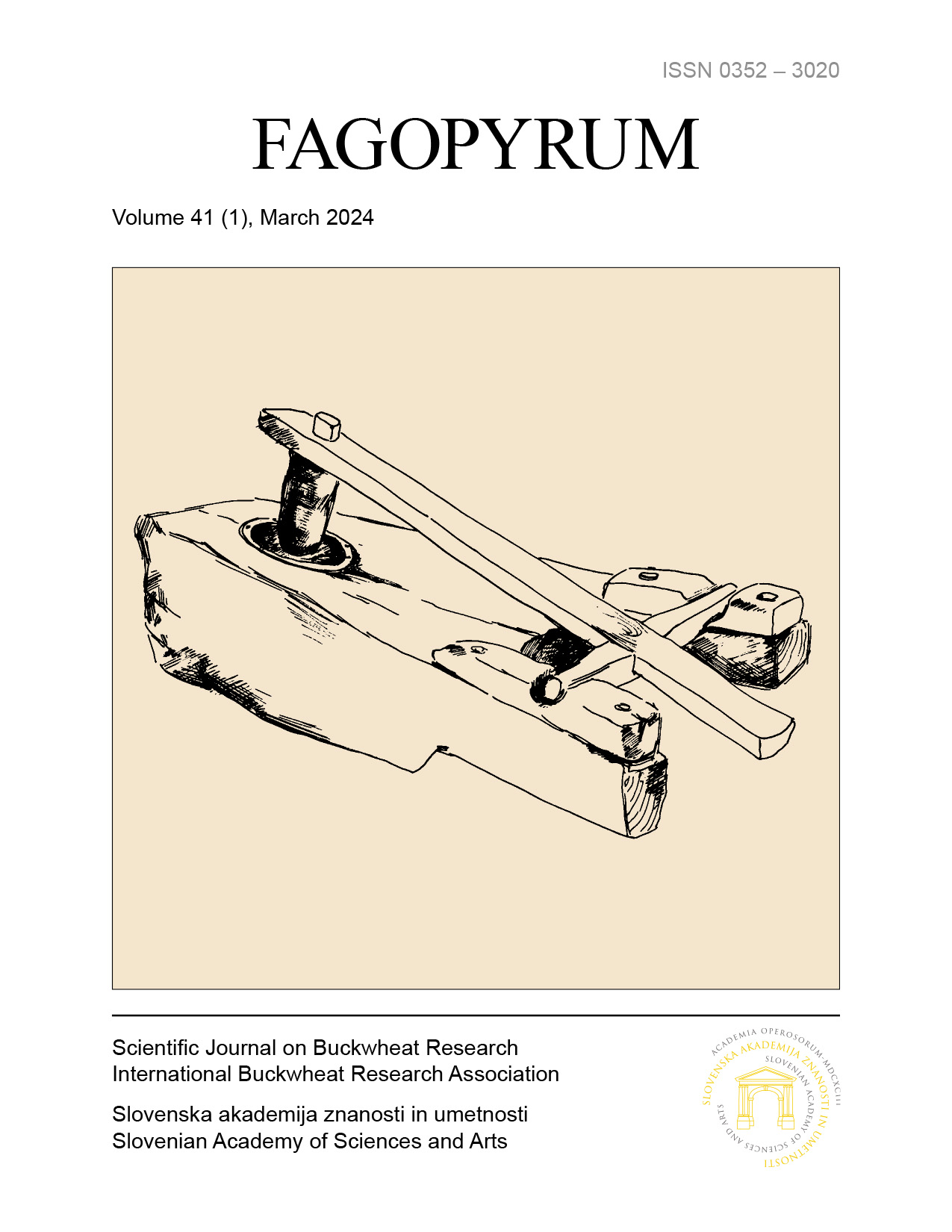The Effect of Location, Cultivar, and Sowing Time on the Growth and Productivity of Buckwheat in Egypt
DOI:
https://doi.org/10.3986/fag0037Keywords:
buckwheat, Fagopyrum tartaricum, Fagopyrum esculentum, Egypt, location effect, cultivar effect, sowing time, growth attributes, productivity, NUSAbstract
The present study was conducted in Egypt at two different locations Bilbeis City Site (BCS) and Sadat City Site (SCS) during two successive seasons (2018/2019 - 2019/2020) planting cultivars Tartary buckwheat (FT) and common buckwheat (FE) in three planting times (mid-Nov., mid-Jan., and mid-March) to investigating the effect of location, cultivar, and sowing time on the growth and productivity under the Egyptian environmental conditions. The study followed a randomized complete block design (RCBD) and compared two buckwheat cultivars, FT and FE to separate locations and different planting times in Egypt. Our results showed that planting buckwheat in BCS consistently outperformed those in SCS in terms of growth and productivity attributes. Species FT showed superior growth metrics and productivity over FE in both sites and seasons. In terms of sowing times, mid-March demonstrated optimal productivity with yields of 596 kg/hectare and 576 kg/hectare across two seasons. The study underscores the combined influence of location, cultivar, and sowing time on the growth and productivity of buckwheat in Egypt, reiterating the need for tailored agricultural practices specific to each region and cultivar for enhanced yield of this promising undertilized and neglected crop in Egypt.

